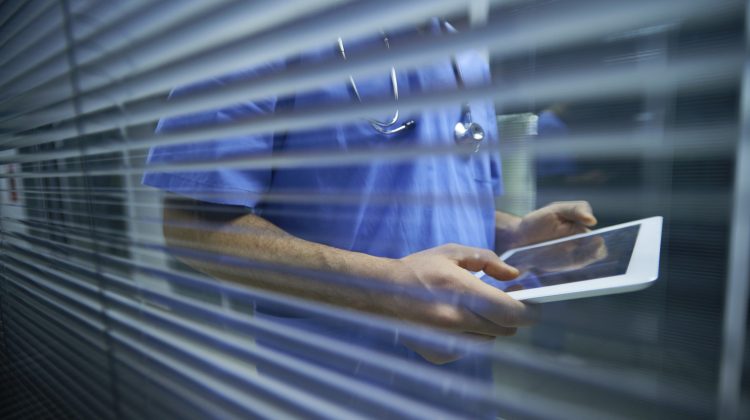What are Stem Cells?
A stem is an unspecialized cell possessing a unique ability to differentiate and self-renew. As the organism grows, stem cells specialize, and take on very specific functions in the body. For instance, mature tissues like skin, muscle, blood, bone, liver, and nerves each have different and unique cell types.
Stem cells exist in two types: embryonic and adult cells. These cells are then (basically) pluripotent or unipotent; A pluripotent cell is one that is capable of giving rise to several different cell types while a unipotent cell cannot differentiate into as many cell types as a pluripotent cell. Researchers hope that these cells will someday be used to treat conditions that have no effective treatment, but for now, research is still very much in its infancy and stem cell treatment is experimental at best.
The Theory Behind Stem Cell Therapy
Theoretically, stem cells have the potential to be able to be used to replace old, damaged tissue with new cells that can “regenerate” into new, healthy tissue such as cardiac muscle, bone, cartilage, or nerve cells that have been destroyed by age, overuse, or injury. This has been evident, for example, in the case of bone marrow transplant in some leukemia patients.
There is still much to learn when it comes to the use of stem cells, however. Much of what we know and what we can currently do with stem cells has been exaggerated by the media and sensationalized by those who would profit from chronically ill or seriously injured patients. Stem cell “clinics” are suddenly popping up all over and looking to capitalize on the hype by selling their promises to the desperate.
Before it can be used safely, stem cell therapy must still overcome a host of challenges, including the multiple safety concerns due to not only the failure of cells to work as expected, but the growth of tumors, the ability of cells to migrate from the placement site and then change into inappropriate types of cells and then multiply, contamination of injected cells (even if they are your own), and administration site reactions, among other serious adverse effects.
While many believe that stem cells could even have the potential to cure cancers, regrow cartilage, and ease painful diseases, the unfortunate fact is that some unscrupulous “treatment providers” out there are pretending that potential equals fact when it does not; for now, the hype is far, far ahead of the science.
Still Experimental
Despite the fact that treatments have neither been shown to be definitively safe nor effective, stem cell clinics are prospering across the United States at the expense of hurting people, charging thousands upon thousands of dollars for their “therapies.” These places cater to patients who are desperate for hope that something will finally help to relieve their pain and treat conditions that traditional medicine cannot.
The cost of a single treatment can range from $2000 to $20,000 and higher, and several treatments are often the case. Since the procedures are still considered experimental, insurance companies typically refuse to cover such costs, so patients must pay these fees out of pocket.
The number of stem cell clinics in the United States has doubled every year from 2009 to 2014. Now, with over 700 stem cell clinics in operation in the United States, federal authorities are finally beginning to crack down on those who are making unproven claims or are selling unapproved stem cell products. There is clearly concern about the financial exploitation of those in pain. While there is lots of hype there is little proof and plenty of financial harm to these patients.

Some Important Things You Should Know
- First and foremost, don’t fall for the hype. Do your research before falling prey to those who would raise your hopes and empty your wallet.
- To date, very, very few stem cell treatments have been shown to be effective, or for that matter, safe!
- Not all treatments are safe. Complications can exacerbate existing health conditions or create new health problems (such as an increase in pain levels or tumor growth).
- Out of pocket expenses can be enormous as experimental treatments are not covered by insurance companies.
- Not all stem cells are created equal. Different cells have different functions, capabilities, and behave differently in the body.
- There is no one-size-fits-all treatment. Clinics offering similar treatments for a wide variety of conditions along with unfounded promises should be viewed with extreme caution.
- The science behind disease should match the science behind the treatment. Unproven stem cell claims aren’t doing that.
- Just because cells from your own body are used does not automatically make them safe. Anytime cells are removed, manipulated, and reinjected there is a risk involved.
- Beware of testimonials and other marketing advertisements. There simply are no miracle cures out there via stem cell therapy for autism, cancer, chronic pain, aging, Alzheimer’s, or the list of other conditions that unscrupulous marketers are trying to sell. The FDA is working to protect the public from those making false claims but is also alerting the public to such schemes.
“To summarize, stem cells offer exciting promise for future therapies, but significant technical hurdles remain that will only be overcome through years of intensive research” (National Institutes of Health, 2019).
Resources
Beil, L. (2019). How unproven stem cell therapies are costing desperate patients. https://www.texasmonthly.com/news/how-unproven-stem-cell-therapies-costing-desperate-patients/
FDA (2019). FDA warns about stem cell therapies. https://www.fda.gov/consumers/consumer-updates/fda-warns-about-stem-cell-therapies
Hicks, J. (2017). Stem cell clinics are ruining people’s lives. https://www.vice.com/en_us/article/mgyq4q/stem-cell-clinics-are-ruining-peoples-lives
ISSCR (2019). Many clinics offering stem cell treatments make claims that are not supported by a current understanding of science. https://www.closerlookatstemcells.org/stem-cells-medicine/nine-things-to-know-about-stem-cell-treatments/
McFarling, U.L. (2016). FDA moves to crack down on unproven stem cell therapies. https://www.statnews.com/2016/02/08/fda-crackdown-stem-cell-clinics
Montague, J. (2019). The ‘unwarranted hype’ of stem cell therapies. https://www.bbc.com/future/article/20190819-the-unwarranted-hype-of-stem-cell-therapies-for-autism-ms
National Institutes of Health (NIH) 2019). Stem cell information. https://stemcells.nih.gov/info/basics/7.htm
National Research Council (US) and Institute of Medicine (US) Committee on the Biological and Biomedical Applications of Stem Cell Research (2002). Stem cells and the future of regenerative medicine. https://www.ncbi.nlm.nih.gov/books/NBK223691/
PBS News Hour (2019). Why expensive, unproven stem cell treatments are a new health care trend. https://www.pbs.org/newshour/health/why-expensive-unproven-stem-cell-treatments-are-a-new-health-care-trend
Perry, S. (2019). How not to fall for stem cell hype. https://www.minnpost.com/second-opinion/2019/09/how-not-to-fall-for-stem-cell-hype/
Sarvestani, A. (2019). Stem cell therapy: What’s real and what’s not at California’s for-profit clinics. https://www.ucsf.edu/news/2019/11/415811/stem-cell-therapy-whats-real-and-whats-not-californias-profit-clinics
Szabo, L., (2019). Elite hospitals plunge into unproven stem cell treatments. https://khn.org/news/elite-hospitals-plunge-into-unproven-stem-cell-treatments/
Turner, L., & Knoepfler, P. (2016). Selling stem cells in the USA: Assessing the direct-to-consumer industry. https://www.cell.com/cell-stem-cell/fulltext/S1934-5909(16)30157-6
Wagner, D. (2016). Patients turn to San Diego stem cell companies for costly, unproven treatments. https://www.kpbs.org/news/2016/sep/20/patients-san-diego-stem-cell-companies-costly-unpr/
Wan, W., & McGinley, L. (2019). ‘Miraculous’ stem cell therapy has sickened people in five states. https://www.washingtonpost.com/national/health-science/miraculous-stem-cell-therapy-has-sickened-people-in-five-states/2019/02/26/c04b23a4-3539-11e9-854a-7a14d7fec96a_story.html
Weintraub, K. 2019). Stem cell clinics: Effective or pricey false hope? https://www.webmd.com/brain/news/20190813/stem-cell-clinics-effective-or-pricey-false-hope
Zakrzewski, W., Dobraynski, M., Syzmonowics, M. & Rybak, Z. (2019). Stem cells: Past, present, and future. https://stemcellres.biomedcentral.com/articles/10.1186/s13287-019-1165-5





No Comment